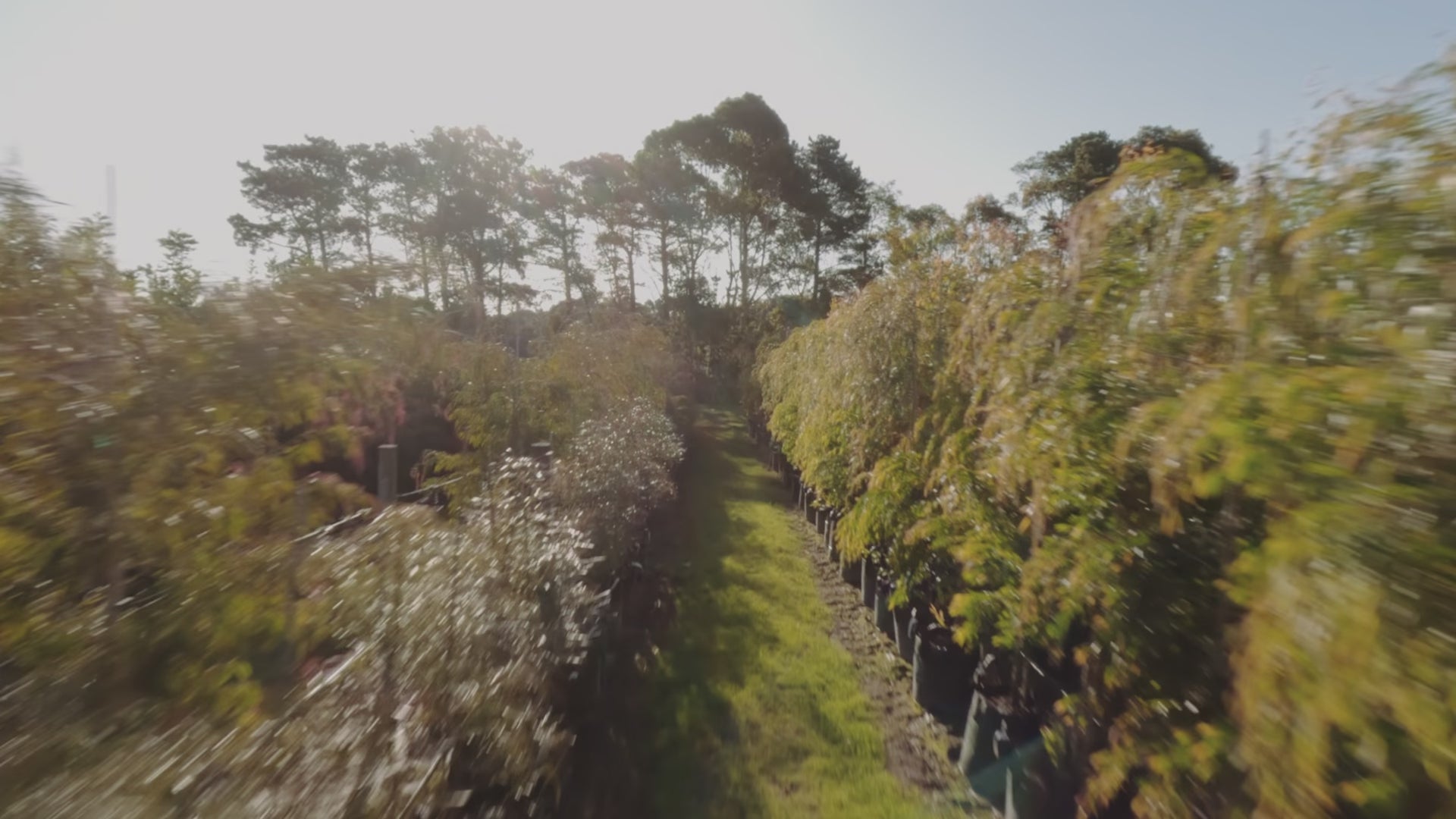Alnus jorullensis - Mexican alder
Alnus jorullensis - Mexican alder
994 in stock
Couldn't load pickup availability
Current Stock Height Guides
Current Stock Height Guides
Trade Customers
Trade Customers
We supply advanced trees to landscapers, developers, architects, and councils Australia-wide. Trade clients receive fast quotes, expert advice, and access to premium stock with reliable freight.
Share this product
About Alnus jorullensis - Mexican alder
Alnus jorullensis – Mexican Alder is a fast-growing, deciduous tree native to Mexico and Central America. With its upright form, lush serrated foliage, and nitrogen-fixing roots, it’s a standout option for adding structure, shade, and ecological value to open landscapes.
Reaching 15–20 metres tall and 10–15 metres wide, Alnus jorullensis – Mexican Alder suits large gardens, windbreaks, and shelterbelts where quick coverage and soil improvement are needed. Its dark green leaves shift to yellow in autumn, and its adaptability to both wet and dry soils makes it highly versatile.
Alnus jorullensis – Mexican Alder looks excellent in parks, revegetation zones, or as a specimen tree, supporting wildlife while enhancing biodiversity with minimal upkeep.
Key Information to Know

Evergreen / Deciduous
Alnus jorullensis - Mexican alder is an Deciduous (Defoliates throughout colder months) Tree

Mature Height & Width
Mature Height: 15 m – 20 m
Mature Width: 10 m – 15 m
Alnus jorullensis - Mexican alder is expected to grow 70 – 120 cm/year.

Frost Tolerance
Is Alnus jorullensis - Mexican alder frost tolerant?
Alnus jorullensis - Mexican alder is Frost Hardy – Survives heavy and frequent frost without damage.

Flowering Information
Alnus jorullensis produces small clusters of yellow catkins in late winter to early spring. These modest flowers appear before the new foliage and provide an early pollen source for beneficial insects as the tree enters its growth cycle.

Native Information
Is Alnus jorullensis - Mexican alder an Australian Native? No
Alnus jorullensis - Mexican alder is Native to Central America, including Mexico and Guatemala, where it grows naturally in montane forests and along rivers at higher altitudes.

Wildlife Value
Its canopy provides shelter for small birds, while its catkins support early-season pollinators such as native bees and hoverflies. The tree also contributes to soil health by naturally improving nitrogen levels, indirectly supporting surrounding plant biodiversity.

Sunlight Information
Alnus jorullensis - Mexican alder will thrive best in:

Preffered Soil
Alnus jorullensis performs best in well-drained loam or sandy loam soils and prefers slightly acidic to neutral conditions. It can tolerate occasional wetness but may struggle in heavy clay or poorly drained areas unless improved with organic matter to boost structure and aeration. Keep soil evenly moist during establishment, then transition to deep, occasional watering as the tree matures to support steady growth and moderate drought resilience.
Botanical Information

Botanical Information
Botanical Information
Common Name: Mexican Alder, Jorullo Alder
Genus: Alnus
Botanical Species: jorullensis
Family: Betulaceae
Botanical Name: Alnus jorullensis
Landscape Uses
Landscape Uses
Alnus jorullensis - Mexican alder works in an:
Planting, Spacing & Care
Planting, Spacing & Care
-
-
-
-
Alnus jorullensis - Mexican alder is expected to grow 70 – 120 cm/year.
Root Ball Dimensions (Width × Depth) For Planting
Root Ball Dimensions (Width × Depth) For Planting
Use this as a reference when digging your planting hole. We recommend digging at least 10% wider than the dimensions below to encourage strong root development.
- 30cm Pot: 33cm (W) × 30cm (D)
- 40cm/45L Pot: 44cm (W) × 41.5cm (D)
- 50cm Pot / 70L Pot: 55cm (W) × 41.8cm (D)
- 100L Bag: 50.6cm (W) × 52.8cm (D)
- 150L Bag: 66cm (W) × 55cm (D)
- 200L Bag: 71.5cm (W) × 60.5cm (D)
- 300L Bag: 88cm (W) × 63.8cm (D)
- 400L Bag: 99cm (W) × 66cm (D)
- 500L Bag: 122cm (W) × 66cm (D)
- 750L Bag: 134cm (W) × 69cm (D)
- 1000L Bag: 146.3cm (W) × 71.5cm (D)
- 2000L Bag: 176cm (W) × 82.5cm (D)
Ideal Conditions
Ideal Conditions
Thrives in
Frost Tolerance
Frost Hardy – Survives heavy and frequent frost without damage.
Drought Tolerance
As a young tree it requires regular watering, but once established Alnus jorullensis develops moderate drought tolerance. It performs best with reliable moisture yet copes with short dry periods, especially in cooler climates or when deep watering is provided during heat.
Flowering Information
Flowering Information
Does Alnus jorullensis - Mexican alder flower?
Flowering Period:
Flower Type:
Flower Colour:
Not Applicable
Alnus jorullensis produces small clusters of yellow catkins in late winter to early spring. These modest flowers appear before the new foliage and provide an early pollen source for beneficial insects as the tree enters its growth cycle.
Frequently Asked Questions
Frequently Asked Questions

We have been featured in






















